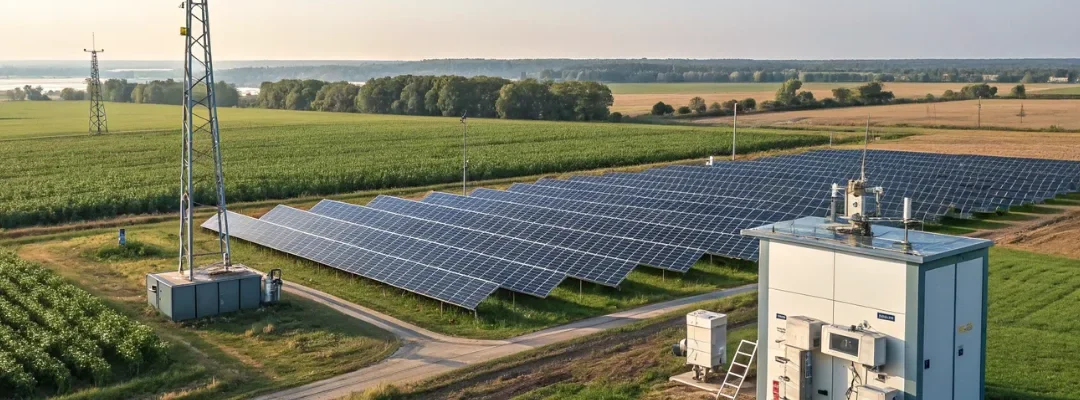Introduction
Power Purchase Agreements (PPAs) are the financial backbone of India’s renewable energy sector. They provide:
- Developers → long-term revenue security
- Investors → predictable cash flows
- Buyers (DISCOMs, corporates, industries) → affordable, clean electricity
Yet, signing a PPA is only the first step. Implementing it comes with hurdles that can delay projects, impact bankability, or reduce investor confidence.
This article explores the three most pressing challenges — land acquisition, tariff disputes, and grid integration — along with practical solutions and lessons for stakeholders.
Challenge 1: Land Acquisition & Aggregation
The Problem
- Solar parks need hundreds to thousands of acres
- Land in India is highly fragmented with multiple small owners
- Issues include title disputes, unclear inheritance records, and local political resistance
Impact on PPAs
- Delayed commissioning → penalties for developers
- Investor hesitation → reduces fund flow into projects
Solutions
- Employ professional land aggregators for legal due diligence
- Promote long-term lease models instead of outright purchases (farmers retain ownership + receive income)
- Digitize and modernize land records (via DILRMP) to streamline verification
Best Practice Example: Karnataka’s Pavagada Solar Park, where land was leased from over 2,000 farmers, ensuring stable income for landowners and smooth aggregation for developers.
Challenge 2: Tariff & Pricing Disputes
The Problem
- Developers & buyers often clash on tariff rates
- DISCOMs sometimes attempt renegotiation when newer, lower tariffs emerge in auctions
- Legacy PPAs at ₹6–7/unit face pressure in a market where auctions discover ₹2.5–3/unit tariffs
Impact on PPAs
- Creates revenue uncertainty for developers
- Erodes investor confidence in contract sanctity
- May discourage long-term capital inflow
Solutions
- Clear tariff clauses in PPAs, with strong legal safeguards
- Encourage competitive bidding for transparent price discovery
- Use escalation clauses (e.g. +2–3% annually) to balance buyer and seller interests
Case Study: In Andhra Pradesh (2019), the state attempted to renegotiate existing PPAs to lower tariffs. This sparked legal disputes, delayed projects, and raised global investor concerns about India’s contract stability.
Challenge 3: Grid Integration & Infrastructure
The Problem
- Renewable plants are often located in remote, high-irradiation zones
- Weak transmission networks, congestion, and curtailment limit power evacuation
- Developers lose money when plants generate power but DISCOMs can’t (or won’t) evacuate it
Impact on PPAs
- Lost revenue despite signed contracts
- Reduced plant load factor (PLF) and overall project IRR
Solutions
- Invest in Green Energy Corridors and high-capacity transmission lines
- Add compensation clauses in PPAs for grid curtailment
- Promote hybrid models (solar + wind + storage) to balance supply and reduce grid stress
Other Critical Challenges
Payment Delays from DISCOMs
- Many state utilities struggle financially
- Developers face cash flow issues due to delayed receivables
- Solution: Promote corporate PPAs with creditworthy buyers
Regulatory Uncertainty
- Frequent state-level policy changes (e.g., open access surcharges, net metering caps)
- Solution: Push for national-level standardization of open access and PPA frameworks
Contract Enforcement Issues
- Buyers may delay compliance or seek early exit
- Solution: Strengthen contract enforcement mechanisms via CERC/SERCs
At a Glance: PPA Implementation Challenges in India
| Challenge | Impact | Solution |
|---|---|---|
| Land Acquisition | Project delays, investor uncertainty | Aggregators, leasing, digital records |
| Tariff Disputes | Revenue uncertainty, renegotiations | Clear clauses, competitive bidding, escalations |
| Grid Integration | Curtailment, lower IRRs | Transmission upgrades, hybrids, compensation |
| Payment Delays | Cash flow stress | Corporate PPAs, escrow mechanisms |
| Regulatory Uncertainty | Investor confusion, policy risk | Policy harmonization, national frameworks |
| Contract Enforcement | Legal disputes, delays | Stronger regulatory oversight & enforcement |
The Road Ahead
Despite hurdles, PPAs remain the cornerstone of renewable growth in India. To fully realize the 500 GW target by 2030:
- Transparent land processes must be implemented nationwide
- Tariff stability should be ensured with robust, enforceable contracts
- Grid modernization is essential to handle rising renewable penetration
If these systemic issues are addressed, India will not only accelerate its solar transition but also retain investor confidence — ensuring PPAs remain the reliable engine driving clean energy growth.

